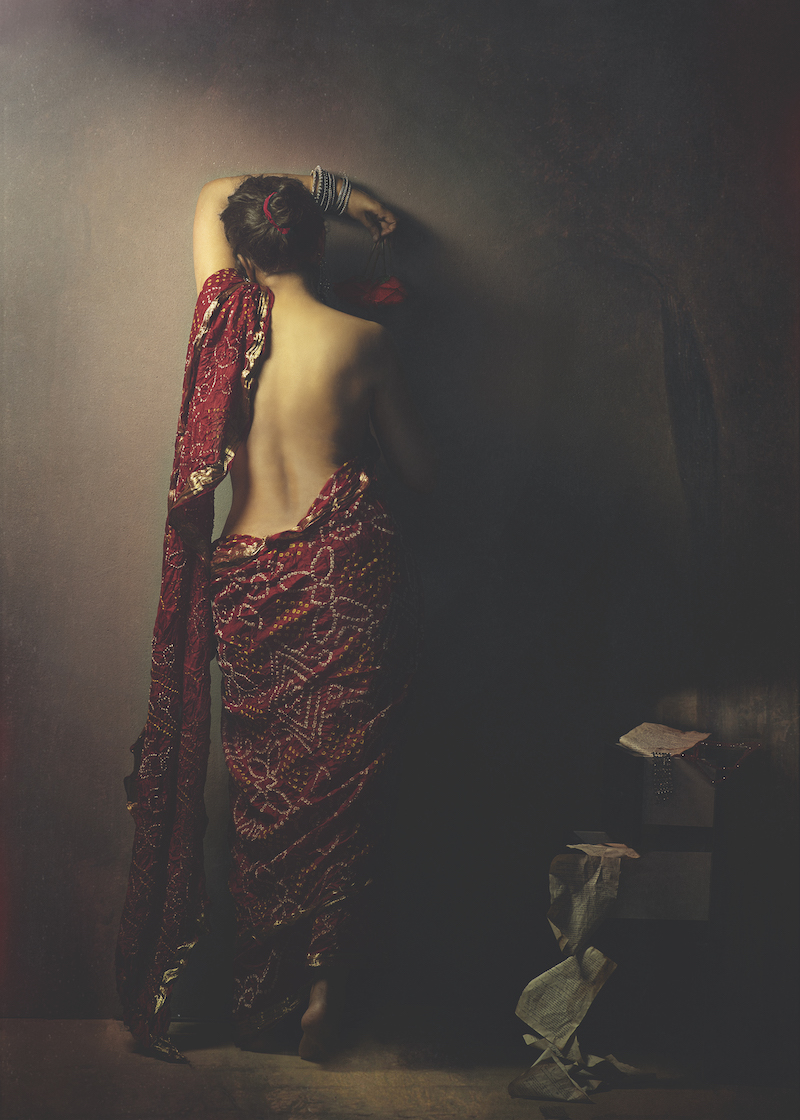A still darkness seeps through the works of Sangeeta Mahajan, a Brisbane-based artist whose photographs illuminate the subtle nuances that make up the human condition. In her works, she explores realities, relationships and the inner self with a fascination for what lies beneath the surface and the richness of life’s imperfections.
Although her artistic career only began two years ago as a self-taught artist, Mahajan’s work has been published in numerous international magazines and received multiple accolades in Australian and international fine art competitions. Her work January 26 was recently awarded the winner of the Clayton Utz Art Award, 2021, run by Brisbane’s Lethbridge Gallery. “In these two years, I think I have spent almost every waking moment learning, thinking, obsessing about art and photography,” Mahajan says.
Almost painterly in effect, Mahajan’s use of light and shadow creates an undulating effect, wrapping her subjects in a muted intensity. Rich colours are pulled to the foreground where bodies hum with luminosity, achieved using old Elinchrom lights. For just a moment we are intimately invited into the space suspended by light. “I like to frame people in situ and capture the micro expressions, the transient emotion, the psychology of relationships that can barely be seen on the surface,” she says.
Mahajan references the Masters – Rembrandt, Caravaggio, Diego Velázquez, Jan Steen and Bartolomé Esteban Murrillo – as her greatest artistic inspirations. Works like Sum of Life, an appropriation of Caravaggio’s Saint Jerome Writing, 1606 pays homage with a modern narrative twist. Nuances of orientalism are present with the use of traditional Indian fabrics as backdrops and props. Subtexts of colonialism are woven into images like Navid, where in the cradling arms of her subject lies a traditionally eastern musical instrument, but one cannot help but be drawn to the subject’s Tudor-inspired ruff that hugs his neck.
At the heart of her works lies the art of storytelling. The portrait’s compositions feel inhabited with an air of displacement. Having completed two postgraduates degrees in literature, Mahajan acknowledges that her real inspiration heavily derives from her studies. “There are poems that I have loved, people that I have loved (or not loved), aspects of the human condition (despair, longing, treachery, failure, anything, and everything)… that disturb or move me – all of this and more seems to subconsciously inspire my art,” she says.
Works like Romance and Shipwreck are reminiscent of the romantics languorous and sensual subjects, whereas Shadows and Weaver of Darkness are hauntingly introspective. The works are rife with layers of loneliness and nuanced complexities which explore themes of belonging and unbelonging. The background of her portraits are often extensions of her subjects’ internalisations or realities; usually occupied by birds, nature, boats and doorways.
A typical day in the studio for Mahajan usually involves setting up the studio at three ends, with three different concepts in mind; this includes lighting, props, backdrops, accessories, and furniture (often collected from antique stores and op shops). “Once the model arrives, I go over my concepts,” she says. “I find that the concepts sometimes take different turns as I am shooting. I love to adapt to the model and their individual personality, emotions, and expressions.”
Her latest project includes two series: the first, titled Black Night, explores themes of loneliness and suffering from different perspectives of people across all ages, while the second series – although not fully conceptualised yet – will explore themes of immigration and identity. “I want to portray the invisible, yet ever-present dichotomy of belonging and unbelonging felt by immigrants in Australia.”
Featured image: Sangeeta Mahajan, Love Letters, 2021. Archival print, edition of 2, 79.8 x 111.7cm. Courtesy: the artist.

